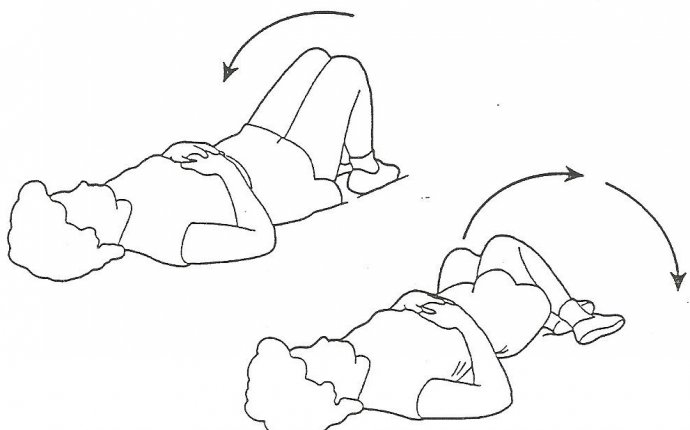
Stretching Exercises Lower back pain
Lower back pain is very common among adults. It can affect all kinds of people—those who need to lift heavy objects at work, those who live a sedentary lifestyle or work in a sedentary environment, and even those who are physically active in sports. There are numerous activities both physical and non-physical that may be causes.
In this article we will cover exercises as well as causes and treatments for pain. Regardless of our level of physical activity, most of us will experience lower back pain at some point in our lives. It is important to understand the causes, possible preventive methods, and available treatments.
Stretching Exercises for Lower Back Pain Relief
Stretching is not only very important for recovery purposes, but also in maintaining flexibility and helping to prevent pain from occurring or re-occurring. Stretching should not cause pain, but rather reduce or relieve it. If you believe your discomfort is from an intervertebral disc injury or other acute injury, consult with a medical professional before attempting any lower back exercises or stretching. Otherwise, performing these stretches should help keep you pain free, or at least help alleviate most of it. Please note that the following stretching exercises can be seen demonstrated in the video below.
- Deep Glute Stretch (hold 30 seconds each side)
- Prone Torso Twist (hold 30 seconds each side)
- Shell Stretch (hold 30 seconds)
- Cobra Stretch (hold 30 seconds)
- Seated Torso Twist (hold 30 seconds each side)
- Seated Crossover Hamstring Stretch (hold 30 seconds each side)
- Standing Toe Touch (hold 30 seconds)
- Cat Stretch (hold 30 seconds)
Video Showing Stretching Exercises
A demonstration of each exercise can be seen in the following video. A huge thanks to Kelli from FitnessBlend for showing us how to perform these lower back stretches in motion.
Glute Stretches for Pain Relief
For the athletic types, such as runners, weight lifters, or any other sports activity, lower back pain may also be caused by tight glutes. In this case, glute stretching exercises may help relieve or prevent discomfort. Glute stretching can be done either before or after your event, or even both. You only need to perform two or three of the following stretching exercises. Perform these exercise 2 times each (2 sets), and be sure to hold each stretch for 30 seconds each before repeating with the opposite leg.
1. Pretzel Glute Stretches (hold 30 seconds each side): Sit on the floor using an exercise yoga mat, leave one leg straight and flat on the mat, and bring your opposing leg up so your foot rests flat on the ground. While supporting your weight behind you with one arm, take the opposite arm of the leg that is raised, grip your knee and pull inward until you feel a good stretch in the glute muscle and hold. Repeat for the opposite leg.
2. Lying Glute Stretches (hold 30 seconds each side): Lie flat on your back side on the floor using an exercise yoga mat and raise both legs up with knees bent at a 90 degree angle. Cross one leg over and position your angle directly behind your knee. Using both hands, grip your other leg under the knee or hamstring area and slightly pull back until you feel a good stretch in the glute muscle. Hold this position for 30 seconds and repeat for the opposite side.
3. Pigeon Glute Stretches (hold 30 seconds each side): Getting into position for this stretching exercise may be somewhat difficult for most, so doing a wide lunge and lowering yourself into a deep stretch position and holding will also suffice. Otherwise, position yourself with one leg slightly crossed in front of you and the other flat behind you on the floor while keeping upright. Now slowly move your upper body from the upright position forward until you feel a good stretch in your glute muscle. Hold this position for 30 seconds and repeat for the other side.
4. Seated Glute Stretches (hold 30 seconds each side): While sitting on a chair or bench with feet flat on the ground in front of you, raise one leg and position the ankle slightly above the knee and resting on the quad muscle closest to the knee area. With both hands push slightly on the opposite knee while bending forward until you feel a good stretch in the glute muscle. Hold this position for 30 seconds and repeat on the opposite side.
5. Standing Glute Stretches (hold 30 seconds each side): Standing beside an elevated platform, raise one leg and rest that food onto the platform. Leaning into that leg will create a stretch in the glute area. Hold that position for 30 seconds and repeat for the other leg.
What Are the Causes?
There are many causes for lower back pain, some of which are, but not limited to, bad posture, accidents, physical activity, sedentary lifestyle, lifting heavy objects, hereditary, and age just to name a few. Let’s briefly cover these below before moving on to treatments and preventions such as core stretching and strengthening exercises.









